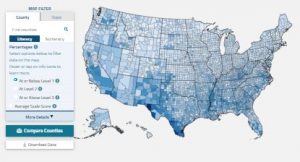|
||
Category Archives: Research
International Literacy Association issue on Reading
The March/April issue of Literacy Today is now available!
This special issue highlights both the joys and the mechanics involved in the act of reading. In doing so, ILA focuses on how reading shapes us as well as the tools and building blocks needed for that to happen.
Research on School Librarians’ Impact on Literacy
Margaret Merga has three articles published on the impact of school librarians on students’ literacy:
Merga, M. K. (2019). School libraries fostering children’s literacy and literature learning: mitigating the barriers. Literacy. https://www.researchgate.net/publication/331950946_School_libraries_fostering_children%27s_literacy_and_literature_learning_mitigating_the_barriers
Merga, M. K. (2019). How do librarians in schools support struggling readers?. English in Education, 53(2), 145-160. https://www.tandfonline.com/doi/full/10.1080/04250494.2018.1558030
Learning Environment and Resources Report
The following report is a research-based position paper about the importance of a supportive learning environment with high quality resources. The report states:”All educators .. have a responsible to ensure responsiveness within instruction, books, assessments, and digital spaces for all students.”
International Literacy Association. (2019). Right to Supportive Learning Environments and High-Quality Resources. Newark, NJ: Author.
Why Reading Books Is Good For You
The World Economic Forum provides five research-based reasons why reading books is good for you: longer life, more efficient knowledge gain, greater literacies, better vocabulary, better brain maintenance. For details, read https://www.weforum.org/agenda/2019/06/5-reasons-why-reading-books-is-good-for-you
Parent-child reading format
Technology has replaced books at bedtime, with more than a quarter of parents trying to use home assistants, apps and voice notes to tell their child a story in the evening, research suggests.
A study commissioned by children’s reading charity BookTrust indicates a growing reliance on digital storytelling.
The survey of 1,000 parents with children aged 10 or under found that, while almost half (49%) said they aim to share a story with their youngsters every night, only 28% manage to do so.
Three in 10 (31%) say work or commuting stops them getting home in time, while one in five simply feel “too busy”.
One in four (26%) UK parents said they had tried to use tech such as virtual assistants for bedtime stories.
However 83% of parents said they generally use print books.
Conducted by Fly Research, the poll suggests technology is picking up the slack.
Sixty-five percent of parents admit giving their children time on a smartphone, tablet, YouTube or in front of the TV, instead of sharing a bedtime story.
For parents who do read stories with their child at night, tech is now a part of that routine.
More than half (53%) say they would choose to use a smartphone, tablet, app or YouTube for the task.
Get the details at https://www.shropshirestar.com/news/uk-news/2019/05/22/technology-used-for-bedtime-stories-research-suggests/
Dutch Reading Association
The Dutch Reading Foundation (via website Reading Monitor (Leesmonitor in Dutch)) publishes the most important results of scientific research on reading promotion. Since 2018, they have provided an English version of the website. You can visit the website via the following address: https://www.leesmonitor.nu/en/promoting-reading. The website contains information on seven different topics that are relevant for reading promotors:
The effects of reading aloud, https://www.leesmonitor.nu/en/reading-aloud
The effects of free-time reading, https://www.leesmonitor.nu/en/free-time-reading
Reading education by parents, https://www.leesmonitor.nu/en/reading-education-by-parents
Reading education by teachers, https://www.leesmonitor.nu/en/reading-education
The influence of libraries, https://www.leesmonitor.nu/en/library-influence
Differences between boys and girls, https://www.leesmonitor.nu/en/boys-and-girls
Nature and nurture, https://www.leesmonitor.nu/en/nature-and-nurture
Best regards,
Gerlien van Dalen, President Dutch Reading Foundation
